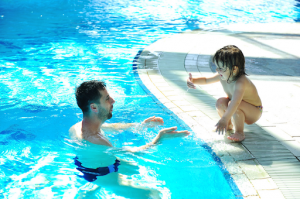Your Essential Guide to Safe Winter Driving in Colorado

Whether you’re a Colorado native, a new Denver resident, or a visitor to the area, navigating the roads of the Centennial State in the winter can be tricky – and even dangerous — if you’re not properly prepared.
Of course, accidents can happen at any time, but add slick icy roads and limited visibility into the equation, and your chances of a crash increase significantly. To stay safe on the roads and avoid disaster when the winter storms come rolling in, follow these essential safety tips.
Winterizing Your Vehicle
First created in 1903 as small brushes that move up and down on the windshield, wipers have evolved over the past century and are helpful in clearing up your vision during a rain or snow storm. However, windshield wipers are only one feature of your car that needs to be in tip-top shape in preparation for winter weather. Ensure that the following steps are taken in the fall to winterize your vehicle:
- Have a mechanic tune up the engine
- Confirm that all lights are functional, especially the headlights
- Check the battery
- Check fluid levels and use all-season or winter oil
- Check the tire pressure and traction, and consider putting on snow tires
Safe Driving Tips
Speed limits should always be observed and obeyed, but just because the sign says 55 mph doesn’t mean you need to match that speed. Consider the road conditions. Driving too fast is the main cause of winter driving accidents. If the road is icy, slow down. Even de-iced roads could still be slippery, and low visibility caused by snowfall can spell disaster for fast-moving vehicles. Make sure to put enough space between your vehicle and the one in front of you in case other drivers need to hit the brakes unexpectedly.
Saul Reisman of Saul’s Autotek gives the following advice:
- “When driving in the snow in Colorado just pretend that your grandmother is in the backseat with a pot of chili in her lap.”
- “As slow as possible as fast as necessary, is a great approach to Winter driving in Colorado.”
Of course, if you’ve got even a hypothetical pot of chili in your lap, you’ll want to go easy on the brakes and avoid sharp turns. If you find your vehicle sliding on ice or slick snow, steer into the slide. Attempting to overcorrect by steering away or braking quickly could send you right into a ditch or another car. For more tips on avoiding disaster on winter roads, search for some winter driving tutorials online. Videos are among the most popular ways of consuming content these days, ad YouTube gets over 2 billion visitors every month. You’ll be able to find numerous informational videos on just what to do if your car begins to fishtail on icy roads.
If you have children in the car, caution should be at the forefront of your mind. You also need to make sure they are properly secured in their seats. Amie Durocher of SafeRide4Kids.com says:
“Parents, remember car seat experts recommend not wearing a big, fluffy winter coat in the car seat. The most important reason is oftentimes it’s difficult to get the harness appropriately tight enough with all of the fluff between it and the child. Secondly, as the car warms up the child can get overheated especially during long mountain drives. Get your child properly buckled then give them a coat to put on backwards over the straps or a blanket.”
Your Car Survival Kit
Every car should be equipped with the proper supplies in case of an emergency. Your kit may include:
- Cat litter for friction on ice
- Provisions like water and non-perishable snacks
- Fire starters
- Flares
- A flashlight with extra batteries
- Extra warm clothes
- Jumper cables
- A snow shovel and scraper
- Tire chains
- A tow rope
- A fully stocked first aid kit
A first aid kit will be your most important item in case of an accident. While you should always call 911 first, basic medical supplies can help keep you or your passengers safe as you wait for first responders to arrive. Each year in the United States, roughly 3 million people are injured in motor vehicle crashes. Car accident-related injuries are costly, though a recent study has revealed that physical therapy can reduce patient costs by about 72%.
Wintertime in Colorado can be a picturesque wonderland, but it can also be dangerous for drivers. Remaining calm, being cautious, and preparing for the worst are the three most important steps you can take to ensure you drive safe this winter.



